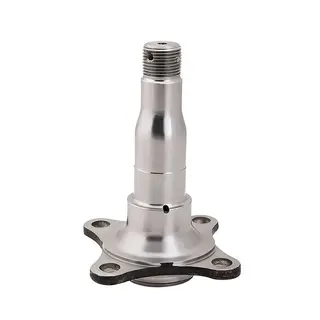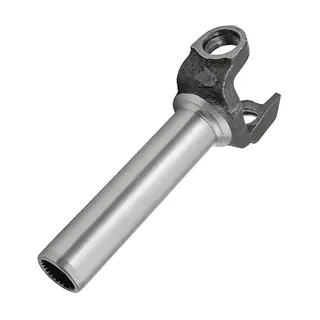In modern industrial manufacturing, high-temperature alloy forging technology is an indispensable key process for producing advanced equipment such as aerospace engines and gas turbines. High-temperature alloys, also known as heat-resistant alloys, are advanced materials capable of maintaining high strength and corrosion resistance under extreme high-temperature conditions. This article will delve into the forging process of high-temperature alloys, key technical points, and their significance in industrial manufacturing.
High-temperature alloys can be divided into iron-based alloys, nickel-based alloys, cobalt-based alloys, chromium-based alloys, and copper-based alloys according to their chemical composition. Among them, iron-based high-temperature alloys use iron as the matrix and add other alloying elements, and are categorized into three basic types, pearlitic, martensitic, and austenitic, based on the microstructure after normalizing. Nickel-based high-temperature alloys use nickel as the matrix, with an austenitic matrix structure, exhibiting excellent high-temperature strength and corrosion resistance.
These alloys possess excellent thermal stability, with service temperatures reaching above 1000°C. However, they have poor plasticity and are difficult to form. To meet the high demands of components in aerospace engines and other power devices, the alloy matrix must undergo solution strengthening, precipitation strengthening, grain boundary toughening, and process toughening treatments to improve its high-temperature mechanical properties.
High-temperature alloys play an indispensable role in high-end fields such as aerospace and energy due to their exceptional high-temperature performance and corrosion resistance. Forging, as a key process in the manufacturing of high-temperature alloys, directly affects the final performance and application effect of the alloy. This section will discuss three core elements of high-temperature alloy forging: phase transformations and precipitates, creep and fatigue and their interaction with the environment, and oxidation-corrosion resistance.
The chemical composition of high-temperature alloys is important and fundamental. High-temperature alloys, through various cold and hot working processes, develop various microstructures, resulting in different mechanical properties. Only by optimizing the process can a good microstructure be achieved, leading to excellent comprehensive performance. Therefore, understanding the phase transformations that occur in high-temperature alloys, identifying various phases, and understanding the effect of each phase on mechanical properties is essential. Only then can targeted measures be taken to control phase transformations, achieve the optimal microstructure, and maximize the potential of the alloy with the same composition.
High-temperature alloy components are subjected to complex stress conditions. Among these, creep stress, fatigue stress, and their interactions with the gas environment are the most common and frequent, and many high-temperature alloy components fail as a result. Understanding the mechanisms and applications of creep, fatigue, and their interaction with the environment is advanced professional knowledge required for studying high-temperature alloys. Engineers and material experts assigned to specific projects must master these mechanisms and applications to ensure component reliability and performance.
In addition to having excellent high-temperature mechanical properties, high-temperature alloy components must also withstand oxidative and corrosive environments. Therefore, they must possess strong oxidation and corrosion resistance. It is necessary to understand the laws of high-temperature alloy oxidation and thermal corrosion to implement protective measures and prepare protective coatings. This improves the surface stability of high-temperature alloy components, enhances their oxidation and thermal corrosion resistance, and extends the service life of the components.
Next, we will explore the core technical points of high-temperature alloy forging. These technical points are critical factors to ensure that high-temperature alloys achieve the desired performance during forging, covering aspects such as precise forging temperature control and rational cooling methods.
The forging temperature of high-temperature alloys has a crucial impact on their performance. Generally, the forging temperature should be controlled between 1100–1250°C. Within this temperature range, the alloy exhibits good plasticity and forgeability. If the forging temperature is too high, it will cause coarse grains, reducing the material's performance; if the forging temperature is too low, forging cracks may occur, affecting the quality of the forged component. Therefore, strict control of the forging temperature is the primary requirement for high-temperature alloy forging.
During the forging of high-temperature alloys, controlling the forging speed and deformation degree is equally important. Too fast a forging speed can easily cause surface cracks, affecting component quality, while too slow a speed may result in insufficient grain refinement due to excessive dwell time in the die, lowering material performance. Therefore, the appropriate forging speed should be selected based on the specific material and component requirements.
At the same time, controlling the degree of deformation is also critical. During forging, the metal should undergo sufficient deformation in the die cavity to achieve the required shape and dimensions. Insufficient deformation will lead to non-conforming properties, while excessive deformation may cause internal cracks, reducing the strength of the component. Therefore, the deformation degree should be reasonably controlled according to the shape and size of the forged component.
During forging, high-temperature alloy components experience severe deformation and high temperatures, generating significant internal and thermal stresses. Improper cooling may lead to cracks, warping, or fracture defects. Therefore, cooling measures are crucial.
Common cooling methods for high-temperature alloy forgings include water cooling, oil cooling, and air cooling. In practice, the cooling method should be selected according to the material and component requirements. In addition, cooling rate must be carefully controlled to avoid cracks or deformation caused by overly rapid cooling.
The method for preparing high-temperature alloy blanks depends on the diameter of the material. For blank diameters less than 25mm, shearing is typically used; for diameters greater than 25mm, abrasive wheel cutting or machining is applied. Abrasive cutting can generate heat that does not dissipate quickly, causing thermal stress and cracks at both ends, so mechanical cutting is usually preferred.
During forging, whether elongating or upsetting, the following technical points must be observed. For elongation, V-shaped upper and lower anvils are used; for alloys with lower plasticity, semi-circular upper and lower anvils are employed to improve stress distribution and reduce cracking. During upsetting, paper coated with glass lubricant is placed at both ends of the blank to achieve uniform deformation; for components with a large diameter-to-height ratio, stacked forging with carbon steel pads at both ends is used. A 5–15 second rest during upsetting allows partial relief of work hardening and improves plasticity.
Separate die cavities should be set for the final elongation, upsetting, and finishing forging steps, and the blank must be preheated to meet the forging temperature requirements for each step. Dies should be preheated to 250–300°C. To ensure uniform deformation and smooth die surfaces, appropriate lubricants, such as graphite colloid or glass lubricants, should be applied.
For high-temperature alloy forgings, post-forging cooling can follow conventional open-die forging practices. Nickel-based alloys are generally air-cooled to prevent thermal cracks, although rapid cooling may be required to inhibit precipitation in hardened alloys. When forging occurs at relatively low temperatures, residual stresses may cause cooling cracks; in such cases, the forging should first be heated to a temperature sufficient to relieve stress, then cooled. Forgings should be immediately placed in a furnace at 50–100°C above the alloy's recrystallization temperature for 5–7 minutes and then air-cooled. This treatment ensures uniform grain size.
High-temperature alloy forging technology is widely applied in aerospace, gas turbines, and automotive manufacturing. In aerospace, it is used to produce turbine blades, combustion chambers, and other critical engine components, which must operate under extreme high-temperature, high-pressure, and high-speed conditions, requiring extremely high material performance. In gas turbines, high-temperature alloy forging is used to manufacture rotors, blades, and other components that also operate in high-temperature, high-pressure environments, demanding excellent material properties. In automotive manufacturing, it is used to produce turbocharger components and other engine parts that operate under high-temperature, high-pressure conditions and require high material performance.
High-temperature alloy forging technology is a critical technique in modern industrial manufacturing. By strictly controlling forging temperature, forging speed, deformation degree, and cooling measures, the quality and performance of high-temperature alloy forgings can be effectively enhanced. In addition, mastering advanced knowledge of phase transformations, precipitates, creep, fatigue, and environmental interactions allows further optimization of forging processes and improvement of overall alloy performance. With the continuous advancement of China's manufacturing industry, high-temperature alloy forging technology is constantly evolving, providing strong support for the development of aerospace, gas turbine, automotive, and other high-end equipment manufacturing industries.



